Clonal selection of hematopoietic stem cells after gene therapy for sickle cell disease
- PMID: 37973947
- PMCID: PMC10719109
- DOI: 10.1038/s41591-023-02636-6
Clonal selection of hematopoietic stem cells after gene therapy for sickle cell disease
Abstract
Gene therapy (GT) provides a potentially curative treatment option for patients with sickle cell disease (SCD); however, the occurrence of myeloid malignancies in GT clinical trials has prompted concern, with several postulated mechanisms. Here, we used whole-genome sequencing to track hematopoietic stem cells (HSCs) from six patients with SCD at pre- and post-GT time points to map the somatic mutation and clonal landscape of gene-modified and unmodified HSCs. Pre-GT, phylogenetic trees were highly polyclonal and mutation burdens per cell were elevated in some, but not all, patients. Post-GT, no clonal expansions were identified among gene-modified or unmodified cells; however, an increased frequency of potential driver mutations associated with myeloid neoplasms or clonal hematopoiesis (DNMT3A- and EZH2-mutated clones in particular) was observed in both genetically modified and unmodified cells, suggesting positive selection of mutant clones during GT. This work sheds light on HSC clonal dynamics and the mutational landscape after GT in SCD, highlighting the enhanced fitness of some HSCs harboring pre-existing driver mutations. Future studies should define the long-term fate of mutant clones, including any contribution to expansions associated with myeloid neoplasms.
© 2023. The Author(s).
Conflict of interest statement
P.J.C. is a co-founder, stockholder and consultant for FL86. M.A.F. is an employee and stockholder of AstraZeneca. D.G.K. receives laboratory funding from STRM.bio. D.A.W. serves on the following committees: Novartis steering committee, Beam Therapeutics scientific advisory board, Skyline Therapeutics (formerly Geneception) scientific advisory board and Biomarin insertion site advisor board. D.A.W. also acts as a consultant for Verve Therapeutics and Monte Rosa Therapeutics. He also has research funding from ExCellThera. E.B.E. served as a consultant for a bluebird bio steering committee. The remaining authors declare no competing interests.
Figures
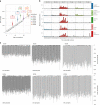


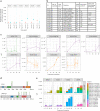

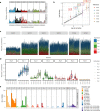

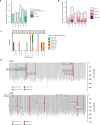
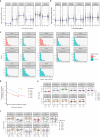
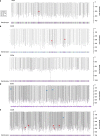

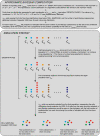
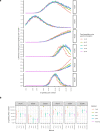
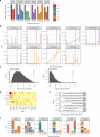
Similar articles
-
Clonal hematopoiesis in sickle cell disease.J Clin Invest. 2022 Feb 15;132(4):e156060. doi: 10.1172/JCI156060. J Clin Invest. 2022. PMID: 34990411 Free PMC article. Clinical Trial.
-
Tissue-Biased Expansion of DNMT3A-Mutant Clones in a Mosaic Individual Is Associated with Conserved Epigenetic Erosion.Cell Stem Cell. 2020 Aug 6;27(2):326-335.e4. doi: 10.1016/j.stem.2020.06.018. Epub 2020 Jul 15. Cell Stem Cell. 2020. PMID: 32673568 Free PMC article.
-
Stem cell graft dose and composition could impact on the expansion of donor-derived clones after allogeneic hematopoietic stem cell transplantation - a virtual clinical trial.Front Immunol. 2024 Dec 16;15:1321336. doi: 10.3389/fimmu.2024.1321336. eCollection 2024. Front Immunol. 2024. PMID: 39737169 Free PMC article.
-
Haematopoietic stem cell health in sickle cell disease and its implications for stem cell therapies and secondary haematological disorders.Blood Rev. 2024 Jan;63:101137. doi: 10.1016/j.blre.2023.101137. Epub 2023 Oct 13. Blood Rev. 2024. PMID: 37919142 Review.
-
Clonal hematopoiesis: Pre-cancer PLUS.Adv Cancer Res. 2019;141:85-128. doi: 10.1016/bs.acr.2018.12.003. Epub 2019 Jan 14. Adv Cancer Res. 2019. PMID: 30691686 Review.
Cited by
-
UM171 enhances fitness and engraftment of gene-modified hematopoietic stem cells from patients with sickle cell disease.Blood Adv. 2024 Nov 26;8(22):5885-5895. doi: 10.1182/bloodadvances.2024013932. Blood Adv. 2024. PMID: 39293082 Free PMC article.
-
Long-term tracking of haematopoietic clonal dynamics and mutations in non-human primate undergoing transplantation of lentivirally barcoded haematopoietic stem and progenitor cells.Br J Haematol. 2024 Dec;205(6):2487-2497. doi: 10.1111/bjh.19889. Epub 2024 Nov 10. Br J Haematol. 2024. PMID: 39523608 Free PMC article.
-
Lineage tracing of stem cells decades after blood and bone-marrow transplantation.Nature. 2025 Feb 5. doi: 10.1038/d41586-025-00345-3. Online ahead of print. Nature. 2025. PMID: 39910360 No abstract available.
-
Current landscape of vector safety and genotoxicity after hematopoietic stem or immune cell gene therapy.Leukemia. 2025 Jun;39(6):1325-1333. doi: 10.1038/s41375-025-02585-8. Epub 2025 Apr 8. Leukemia. 2025. PMID: 40200078 Free PMC article. Review.
-
Treating genetic blood disorders in the era of CRISPR-mediated genome editing.Mol Ther. 2025 Jun 4;33(6):2645-2662. doi: 10.1016/j.ymthe.2025.01.031. Epub 2025 Jan 17. Mol Ther. 2025. PMID: 39827371 Review.
References
MeSH terms
Grants and funding
LinkOut - more resources
Full Text Sources
Medical
Miscellaneous

